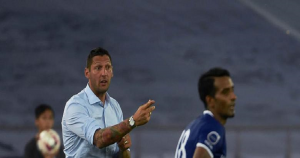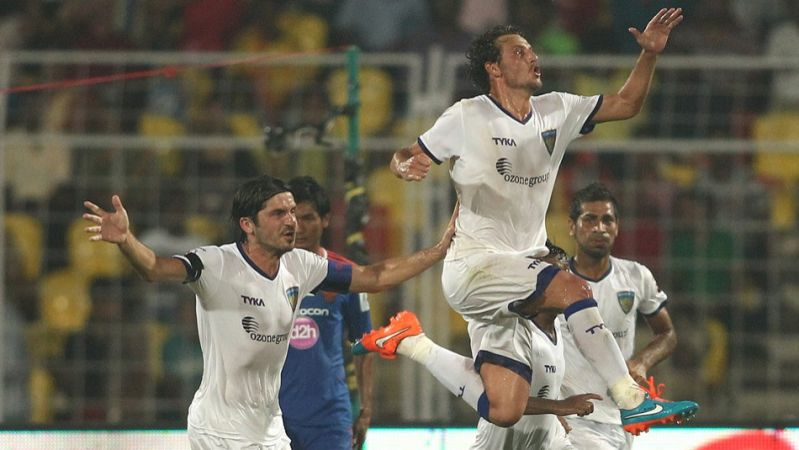
Indian Super League: Materazzi’s Tactical Masterclass Has Forced Zico Into A Strategic Rethink
Fun-loving Goa, a tourist hub where life glides at a distinctly relaxed pace, truly deserves a team that strives to play a carefree and flamboyant brand of football. The sport is integral to Goan culture. In that sense, FC Goa and its manager Zico, a Brazilian great of the late ‘70s and early ’80s, have proven to be a match made in heaven.

Zico’s men were by far the most entertaining team in the inaugural season of the Indian Super League. The Brazilian had steadily instilled an eye-pleasing offensive style of football that helped the club reach the semi-finals in some style. Of the four semi-finalists – Chennaiyin FC, Atletico de Kolkata and Kerala Blasters being the other three – only Goa could genuinely lay claim to a proud football identity.
This season, however, has been slightly different. Zico has been forced into a major tactical rethink after what he acknowledged as the “worst loss of his coaching career” – a 0-4 defeat to Chennaiyin FC. The team’s style of play has been compromised in the process.
Sumptuous football
Goa’s preferred formation had been 4-2-3-1 in the 2014 season and it brought the team plenty of success. Even when early results weren’t going Zico’s way last season, it was evident that his side was dictating the game and playing some sumptuous football.
In the first two matches of this season – a 2-0 win over Delhi and a 1-1 draw with Kolkata – the manager continued in the same vein. His two Indian wingers – Romeo Fernandes and Mandar Rao Desai – continued from where they left off the previous season, flying out of the blocks and running both teams ragged.
But chinks in Goa’s armour were clearly visible.
New signings Leonardo Moura and Jofre Mateu, part of Zico’s central midfield trio, were fantastic players on the ball, but not so much off it. The Roberto Carlos-managed Delhi Dynamos showed that if you could get hold of the ball and play through the middle, this soft centre in the Goan midfield could be exploited even if it left you vulnerable to counterattacks via the flanks. For three quarters of the game, Delhi held the upper hand but could not score. They also hit the woodwork twice.
Zico faced another problem in the second game. When Kolkata went down to ten men and sat deep in their own territory to defend a lead, they took away one of his major weapons: the counterattack. Goa eventually found a late equaliser via Keenan Almeida’s low drive, but the home side were largely reduced to attempts from distance or hopeful crosses into the box.
Materazzi’s masterclass
So when manager Marco Materazzi landed on Goan shores having learnt from Delhi and Kolkata’s tactical successes, he devised a plan of attack to exploit the opposition’s loopholes.
To counter Goa’s threat on the wings, the Italian ditched the narrow diamond he had deployed in midfield for the first two games and reverted to a flat four instead. For Chennai, Thoi Singh was asked to stay out wide on the right and Jayesh Rane, who had previously played up front, was placed on the left flank. Both men, in tandem with Chennayin FC’s full-backs, did such a fine job that Zico was forced to substitute both his wingers.
Instead of going in with two forwards, Materazzi opted for only one and invited Goa to attack his side. He relied on the guile of playmaker Elano to exploit the spaces left vacant by Moura and Jofre, and on the pace of striker Stiven Mendoza, to outpace the slow-moving central Goan pairing of veteran Lucio and Gregory Arnolin.
Elano and Mendoza did their jobs to perfection, combining in devastating fashion. Mendoza scored a hat-trick while Elano grabbed one. Chennaiyin were 2-0 up at half time when it could have been six, and eventually ran out 4-0 winners – a scoreline that flattered Goa.
Re-evaluating his options
If there was ever a tactical masterclass in the ISL, this was it. Materazzi completely outfoxed a predictable Goa side – unchanged for a third game in a row – in what turned out to be the most one-sided contest in the short history of the ISL.
Such was the impact of that dreadful result on Zico, that he has not started with his beloved 4-2-3-1 formation in any of the four games since. Those four matches have produced two wins, a draw, and a loss. In one of those wins, a 2-1 result over Kerala Blasters at home, Goa played so poorly that veteran commentator John Helm declared it as “the luckiest result in Zico’s managerial career”.
The change in tactics has also affected the stability of the team. Wingers Romeo and Mandar, who have been at the centre of much of Goa’s success, were not part of the starting XI in the three matches that followed the Chennaiyin defeat. As a consequence, Goa lacked the spark of old.
Zico needed a way to bring them back into the line-up without comprising on numbers in central midfield. He opted for a significantly different 3-5-2 formation against table-toppers FC Pune City. That game ended in a 1-1 draw, but at least succeeded in rekindling some of Goa’s lost magic.
As the ISL season enters its second half, it remains to be seen whether the Brazilian great can overcome a spate of injuries and rediscover the Midas touch that made his team the most watchable in the league.